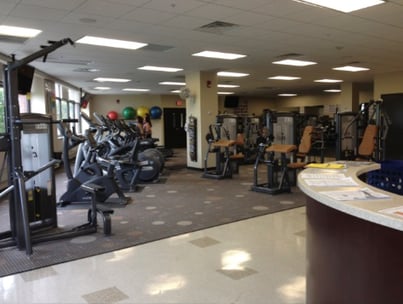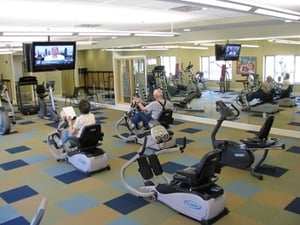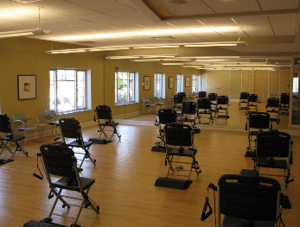 This has been the year of design and consulting work for senior living clients who are renovating or building new fitness centers. I think I could give you the dimensions of a NuStep T4r model in my sleep (they are 60 x 27 x 24 inches, by the way). It truly is exciting to see the industry dedicating resources to well-designed fitness spaces to support quality programs and services for residents.
This has been the year of design and consulting work for senior living clients who are renovating or building new fitness centers. I think I could give you the dimensions of a NuStep T4r model in my sleep (they are 60 x 27 x 24 inches, by the way). It truly is exciting to see the industry dedicating resources to well-designed fitness spaces to support quality programs and services for residents.
Although getting the right equipment and layout is important, these five design elements come up time and time again and should be considered early in the planning process. They might not be the same level of financial investment as your large equipment purchases, but they can significantly enhance your users’ experience and the program’s success.
 Televisions and entertainment: Determine whether you will pursue wall-mount televisions or the integrated console option on the cardio machines. With some equipment like NuSteps and rowers not having the integrated TV option, you will want a wall-mount TV somewhere in your facility. With wall-mount TVs you’ll have to navigate the channel wars for the lifelong battle between Fox News, CNN, and MSNBC, which individuals have VERY strong preferences for—imagine that! Consider an FM tuner option with headphones if needed, but we generally see residents politely following the first-come, first-served rule.
Televisions and entertainment: Determine whether you will pursue wall-mount televisions or the integrated console option on the cardio machines. With some equipment like NuSteps and rowers not having the integrated TV option, you will want a wall-mount TV somewhere in your facility. With wall-mount TVs you’ll have to navigate the channel wars for the lifelong battle between Fox News, CNN, and MSNBC, which individuals have VERY strong preferences for—imagine that! Consider an FM tuner option with headphones if needed, but we generally see residents politely following the first-come, first-served rule.- Water source: Don’t forget to dedicate space for a water fountain or hydration station in the fitness center and where group fitness classes are held, or within immediate proximity. It’s highly important to encourage hydration during exercise. The more conveniently located the water source, the better.
- Balance training area: When designing a fitness center, most think of cardio equipment, strength equipment, and then a stretching area. Don’t forget about an area dedicated to balance training. This can be as simple as a wall with a handrail and a balance pad. A balance training area can be one of the busiest spots in your fitness center—particularly if you have qualified staffing to provide fall-prevention programming.
- Mirrored walls: Coaching residents on how to perform exercises in front of a mirror can make a significant impact on reinforcing proper form and posture. This can be especially important in group fitness spaces or in areas of the fitness center where residents might be performing balance, resistance band, or dumbbell exercises.
 Exercise chairs: We are big fans of the Resistance Chair for exercise classes, but if you are using traditional chairs, consider these specifications to make them more exercise-friendly. Armrests can be obstructive to a number of upper-body exercises, limiting a participant’s range of motion. Choosing an option without armrests or a slimmer armrest option is ideal. Also consider the height and weight of the chair; many chairs are used as a stable base of support and serve as a handle during standing exercises. Consider a chair with a taller backrest that can help residents maintain a tall, upright posture while performing exercises.
Exercise chairs: We are big fans of the Resistance Chair for exercise classes, but if you are using traditional chairs, consider these specifications to make them more exercise-friendly. Armrests can be obstructive to a number of upper-body exercises, limiting a participant’s range of motion. Choosing an option without armrests or a slimmer armrest option is ideal. Also consider the height and weight of the chair; many chairs are used as a stable base of support and serve as a handle during standing exercises. Consider a chair with a taller backrest that can help residents maintain a tall, upright posture while performing exercises.
These minor details can make a big impact on the functionality of the space and programming options. We have designed dozens of senior living fitness centers and take these things and much more into consideration when creating the most functional and comfortable space for residents. Check out NIFS’ Senior Living Wellness Consulting page for more insight into how we support fitness center design projects across the country.
